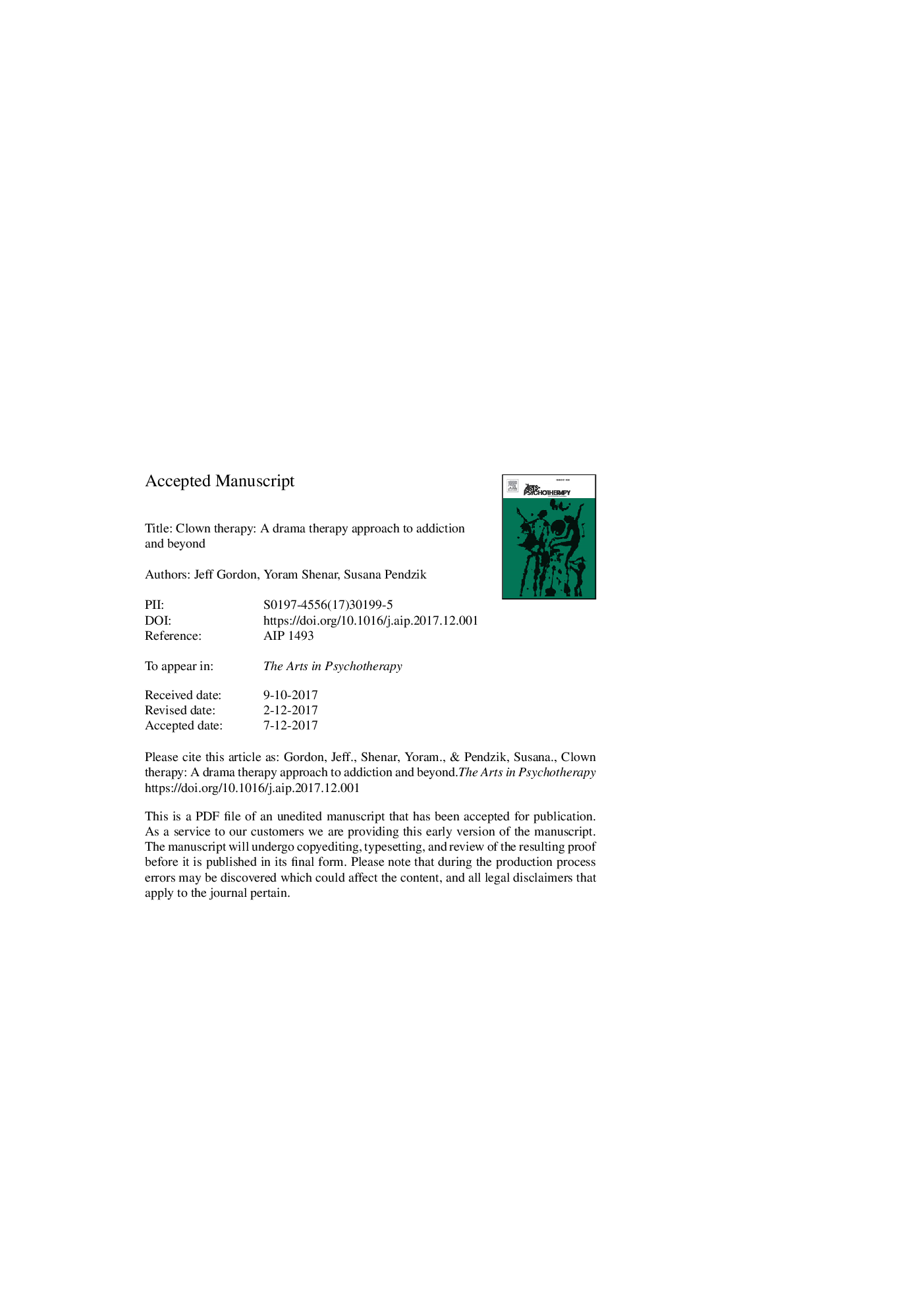| Article ID | Journal | Published Year | Pages | File Type |
|---|---|---|---|---|
| 6831399 | The Arts in Psychotherapy | 2018 | 35 Pages |
Abstract
A drama therapy approach to working with addiction using clown therapy was developed via a process through which clients were led to discover their inner clown. Using drama therapy techniques, each client's key/dominant and oppositional personality roles were recognized and brought together through embodiment, leading to the emergence of the clown. The theoretical and practical foundation of the approach are presented here, with reference to the drama therapy literature, to the Jungian concept of the transcendent function, and to Winnicott's transitional phenomenon. The stages of the process are described, illustrated with techniques and short case studies. Viewed as the archetypal embodiment of paradox, it is suggested that the clown can serve as a container of ambivalence, thereby acting as a strategy for normalizing paradox in the process of recovery and rehabilitation. Symbolizing the bridge between antagonistic sides of the self, the encounter with the inner clown allows individuals to tolerate and live with paradox, resolving the feeling of being stuck in a state of inner and outer conflict.
Related Topics
Health Sciences
Medicine and Dentistry
Psychiatry and Mental Health
Authors
Jeff Gordon, Yoram Shenar, Susana Pendzik,
